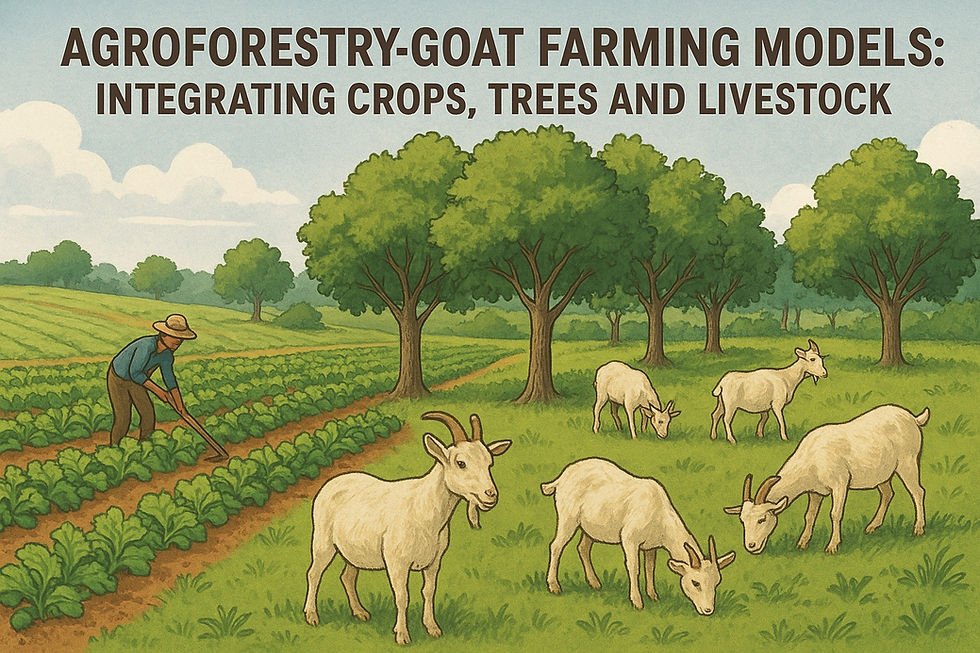Silk, Goats, and Grasslands: Small Ruminants in Central Asia’s Nomadic Traditions
- Global Services TGT
- Apr 29
- 3 min read
From the sweeping steppes of Kazakhstan to the mountainous pastures of Kyrgyzstan and the Gobi-edge grasslands of Mongolia, the story of Central Asia has always been a story of movement—of wind, herds, and the people who follow them. For centuries, nomadic traditions have shaped the fabric of life in this vast region. At the heart of this cultural and economic rhythm lie the small ruminants—goats and sheep—that continue to play a central role in sustaining livelihoods and preserving a timeless way of life.
Long before borders were drawn and long before modern infrastructure sliced through valleys and plains, nomadic herders moved seasonally with their flocks in search of fresh pastures. This ancient transhumance system, passed down through generations, is tailored to Central Asia’s unique ecology: arid deserts, high-altitude meadows, and windblown plateaus.
While yaks, camels and horses often steal the visual spotlight, it’s the goats and sheep that quietly underpin food security, textile production and social structure. These animals are portable, hardy and versatile—ideal companions for a lifestyle defined by constant movement and adaptation.
Central Asia is a cradle of luxury fibers, especially cashmere and fine wool. The region’s cashmere goats, particularly in Mongolia and parts of western China (Xinjiang), produce some of the softest and most valuable fibers in the world. These fibers are not just commodities—they are an expression of the land itself, grown in response to harsh winters and lean summers.
Families rely on goats not only for their fiber, but also for milk, meat and skins. The act of shearing, spinning and weaving is often done by hand, with skills passed through matriarchal lines. These crafts represent both economic sustenance and cultural identity, especially in remote and rural areas.
Sheep in Central Asia are valued for their fat-tailed varieties, which are uniquely adapted to survive in low-nutrient environments by storing fat in their tails—a natural reserve for the long, cold winters. Their meat is central to many regional cuisines (think mutton stew, shashlik or beshbarmak) and their wool is used in traditional felting practices, including the creation of yurts, rugs and clothing.
The use of felt, made from sheep’s wool, is deeply tied to nomadic heritage—used for insulation, decoration, and even spiritual symbolism.
Central Asia’s grasslands, once teeming with biodiversity and resilient ecosystems, are now under growing pressure. Overgrazing, climate change, desertification, and modernization threaten both the landscape and the lifestyle of herders. In some regions, mobility is restricted due to political borders, land privatization, or resource competition, disrupting traditional grazing routes.
At the same time, urban migration and generational shifts have seen many young people leave the herding life behind. The result is a fragile balance: the traditions endure, but are increasingly challenged by socio-economic realities.
In recent years, there has been a quiet resurgence of interest in preserving nomadic knowledge and sustainable herding practices. NGOs, local governments, and international development agencies are working with herders to support:
Pasture management education
Mobile veterinary services
Community-based wool cooperatives
Heritage branding for yak and goat products
Some herders are even leveraging digital technology—using satellite data for pasture prediction or mobile platforms to access markets and weather updates. These innovations show that tradition and technology can coexist and even strengthen one another.
In the endless expanse of Central Asia’s grasslands, the soft bleating of sheep and the sure-footed climb of goats across craggy terrain are more than background noise—they are the pulse of a culture, the echo of ancient rhythms. As the world races forward, there is deep value in looking back to the resilience, wisdom, and sustainability embedded in these nomadic traditions.
Goats, grasslands and gers (yurts) may seem like relics from a distant past, but in the heart of Central Asia, they remain very much alive—symbols of adaptation, survival and identity. And if given the support they deserve, they will continue to thrive well into the future.



Comments